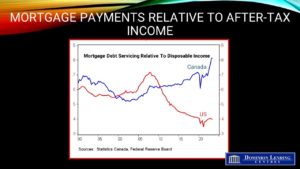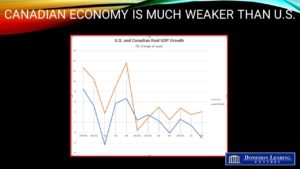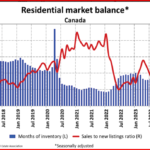A Comprehensive Guide to Understanding Reverse Mortgages in Canada: Designing Your Ideal Lifestyle and Debunking Myths
Introduction:
As Canadians embrace longer life expectancies and evolving financial goals, reverse mortgages have gained prominence as a versatile financial tool. In this comprehensive guide, we’ll explore the intricacies of reverse mortgages in Canada, shedding light on how they can be used to design your ideal lifestyle. Additionally, we’ll debunk common myths surrounding reverse mortgages, providing you with accurate information to make informed decisions about this unique financial solution.
Understanding Reverse Mortgages in Canada
1. What is a Reverse Mortgage?
A reverse mortgage is a financial product designed for Canadian homeowners aged 55 and older. It allows homeowners to convert a portion of their home equity into tax-free cash without selling their property. Unlike traditional mortgages, there are no monthly mortgage payments required.
2. How Does It Work?
The homeowner receives funds either as a lump sum, regular payments, or a combination of both. The loan, along with accumulated interest, is repaid when the homeowner sells the home, moves out, or passes away. The remaining equity belongs to the homeowner or their estate.
Designing Your Ideal Lifestyle with a Reverse Mortgage
1. Supplementing Retirement Income:
A reverse mortgage can provide a steady stream of income to supplement retirement funds, enabling homeowners to maintain their desired lifestyle.
2. Home Renovations or Upgrades:
Accessing home equity allows homeowners to fund renovations or modifications, making their living space more comfortable and suitable for aging in place.
3. Debt Consolidation:
Reverse mortgages can be used to pay off existing debts, reducing financial stress and improving overall financial well-being.
4. Travel and Leisure:
Enjoying your retirement to the fullest is possible with a reverse mortgage. Whether it’s travel, hobbies, or leisure activities, accessing home equity provides the financial flexibility to pursue your passions.
Debunking Common Myths about Reverse Mortgages
1. Myth: You Lose Ownership of Your Home with a Reverse Mortgage
Reality: Homeownership remains with the borrower. The homeowner retains title and can continue to live in the home as long as it remains their primary residence.
2. Myth: You Can Owe More Than Your Home’s Value
Reality: Canadian reverse mortgages are non-recourse loans. This means that neither the homeowner nor their estate will be responsible for repaying more than the appraised value of the home.
3. Myth: Reverse Mortgages are a Last Resort for Financial Distress
Reality: Reverse mortgages are a financial planning tool and can be used proactively to enhance retirement lifestyle, manage finances, and meet specific goals.
4. Myth: You Can Be Forced to Move Out of Your Home
Reality: As long as the homeowner maintains the property, pays property taxes, and keeps up with home insurance, they can live in their home indefinitely, even with a reverse mortgage.
Conclusion:
Understanding reverse mortgages in Canada is essential for designing a lifestyle that aligns with your retirement goals. By debunking common myths and exploring the versatile uses of reverse mortgages, you can make informed decisions that enhance your financial well-being. As you consider this financial option, consulting with professionals like the Angela Calla Mortgage Team ensures that you receive personalized advice tailored to your unique situation. With accurate information, you can unlock the potential of reverse mortgages to create your ideal lifestyle in retirement.
Angela Calla is an 19-year award-winning woman of influence which sets her apart from the rest. Alongside her team, Angela passionately assists mortgage holders in acquiring the best possible mortgage. Through her presence on “The Mortgage Show” and through her best-selling book “The Mortgage Code“, Angela educates prospective home buyers by providing vital information on mortgages. In light of this, her success awarded her with the 2020Business Leader of the Year Award.
Angela is a frequent go-to source for media and publishers across the country. For media interviews, speaking inquiries, or personal mortgage assistance, please contact Angela at hello@countoncalla.ca or at 604-802-3983.
Click here to view the latest news on our blog.












